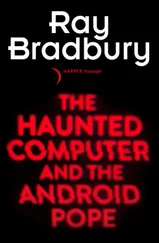Ken had taken on another programming job while Roberta copied disks, put them into plastic bags, and sent them out via U.P.S. At night, Roberta started working on an even more ambitious adventure game. A few months into the enterprise it became clear that On-Line Systems would require more than part-time attention, and so Ken quit what would be his last job to devote his energies full time to the business. They then packed up the kids, the Apple, and the disks and headed for a cabin in the Sierra foothills, where they proceeded to live out a fantasy they had of living in the country while making a fortune. They finished a second game. The Wizard and the Princess, which had considerably better pictures, and it was even more successful.
They opened a small office in the town of Coarsegold, not far from Yosemite, in December 1980. They hired their first employee to help out around the office. Two weeks later they hired someone to help their first employee, and a week later they had to hire someone to help their help’s help. Money was pouring in at an astounding rate. Here they were, in their mid-twenties, living out their fantasies—raising their children in the beautiful Sierra foothills, creating their own software in a cabin they had bought with their first few months’ profit, and expanding their cottage industry to the point where it was the largest single employer in the country.
On-Line was probably much more profitable than Sirius or Brøderbund in 1981 because Ken and Roberta had written their best-selling programs themselves and didn’t, therefore, have the huge royalty expenses that the rest of us had to pay. Over at Sirius, Nasir was getting 35 percent of the receipts off the top. Brøderbund was paying anything from 20 to 45 percent. But eventually Ken became so involved in the business that he had less and less time for programming, and so he ended up having to pay royalties too. And as he did, he watched his profitability shrink.
In a lot of ways Ken and Roberta treated On-Line more as an extension of their personal lives than as a business back then. In those early years, they still paid for everything out of the same checkbook—floppy disks, shoes for the kids, royalties, groceries—you name it, it all came out of the same place. That may account for why their reaction was stronger than ours would have been to the decline in profits occasioned by their increasing royalty costs. Ken wouldn’t stand for it, in fact, and he told me what he was going to do about it.
He planned to build an all-employee, wage-earning programming force that he could train and control so he wouldn’t have to give up all those percentages that were escaping through royalties. He figured that there were a lot of programmers out there, mostly young, who would jump at a chance to live in California, right next to Yosemite National Park, where Ken could provide them with housing and vehicles, take them water-skiing every Wednesday, provide for their earthly needs like food and clean laundry, and cut them loose to program nonstop. And he had every reason to believe the plan would work. He was enough of a programming wizard to win the respect of any young hacker, and he and Roberta had created a lifestyle and self-contained community that would be tremendously appealing to young programmers who were tired of being loners and outcasts.
But I had my reservations about Ken’s plan, and I told him so. It seemed a little too paternalistic to me. I have always believed that it is impossible to mass produce creativity, and that’s what it seemed to me that Ken was proposing. But Ken argued that, in fact, he was creating the perfect creative work environment.
As it happened, Ken’s scheme didn’t work smoothly. By 1982, when On-Line had become Sierra On-Line, press stories about young programmer-millionaires were popping up all the time in magazines like Time and Newsweek, and all the programmers understood that the way to achieve such status was through the mysterious financial device known as royalties. As a result, it proved very hard to hire competent hackers on a wage basis. And Ken and Roberta had to keep paying royalties anyway, even as increasingly large portions of their sales receipts went into marketing expenses and licensing activities. They still have some programmers. They lost many, and Ken is now programming again himself.
Even though Ken and Roberta had their problems with programmers, they did manage to run their company as a kind of extended family. They had a lot of fun, especially in the early days. Some describe their outfit as a summer camp in the woods. What is clear is that it very much reflects the personalities and temperaments of Ken and Roberta Williams.
Although Roberta is far less gregarious and outgoing than Ken, she has a very strong personality. Ken tends to see the best in everybody and look for the upside potential of every deal. I think that Roberta, however, is the practical one of the pair, and the less adventurous. Once in a while, though, the pair decides to take action that seems foolhardy at first, and when they do, it is often because Roberta is standing up for a principle.
For instance, there was the time Ken and Roberta decided to take on Atari. Understand—this was not the small-scale, entrepreneurial Atari of Nolan Bushnell’s era, but the corporate giant of the early Warner days, with an income that was still in the black by hundreds of millions of dollars.
Ken and Roberta’s conflict with Atari started because of a dispute over Atari’s billion-dollar baby— Pac-Man. In our early years, Brøderbund and On-Line both marketed products that turned out to be Pac-Man derivatives. In fact, our product, Snoggle, came from Japan and was originally named Apple Puckman. But that was before Pac-Man had been introduced into the U.S. market, so we thought that our product was original. When Atari came out with its home version of Pac-Man , however it was clearly the same game. Atari demanded that Brøderbund remove Apple Puckman from the market, and we complied. Ken and Roberta had a game called Gobbler. It was similar to Pac-Man in many respects, but it was not identical. When Atari came down on them and demanded that they withdraw the product from the market, Ken and Roberta got their backs up and decided to fight. They didn’t like the way big companies like Atari pushed people around.
So Ken hired a lawyer who managed to get the case tried locally. (Remember, On-Line was a prominent employer in the small Sierra foothill towns of Oakhurst and Coarsegold.) And Ken cleaned Atari’s clock. Most of us in the industry, including Ken, felt that the On-Line product was a rip, and my reading of several prominent cases in other jurisdictions reinforces that feeling. When Ken and I talked about it, he even worried that it could set a precedent favorable to those who might pirate his software. But Atari obviously mishandled the case. Its lawyers came in and tried to browbeat a local judge, implying that the case was beyond his competence. But Atari was never known for its common sense or humility. That’s why I think it must have been Roberta who Prodded Ken into taking on Atari. I can just hear her saying to him: “You know we can’t let them push us around. We can’t have that. You have to do something about it.”
All in all, Ken’s plans always seemed grander than ours, He was ready and willing to move into the fast track while we were still worrying about whether or not to start shrink-wrapping Brøderbund’s products. And he started playing for very high stakes in 1982, beginning with his first round of venture capital money. Ken wanted to be the biggest and best software publisher, and he didn’t think he could do it unless he became involved with professionals who knew more than he did about “going public” and high finance.
Читать дальше










